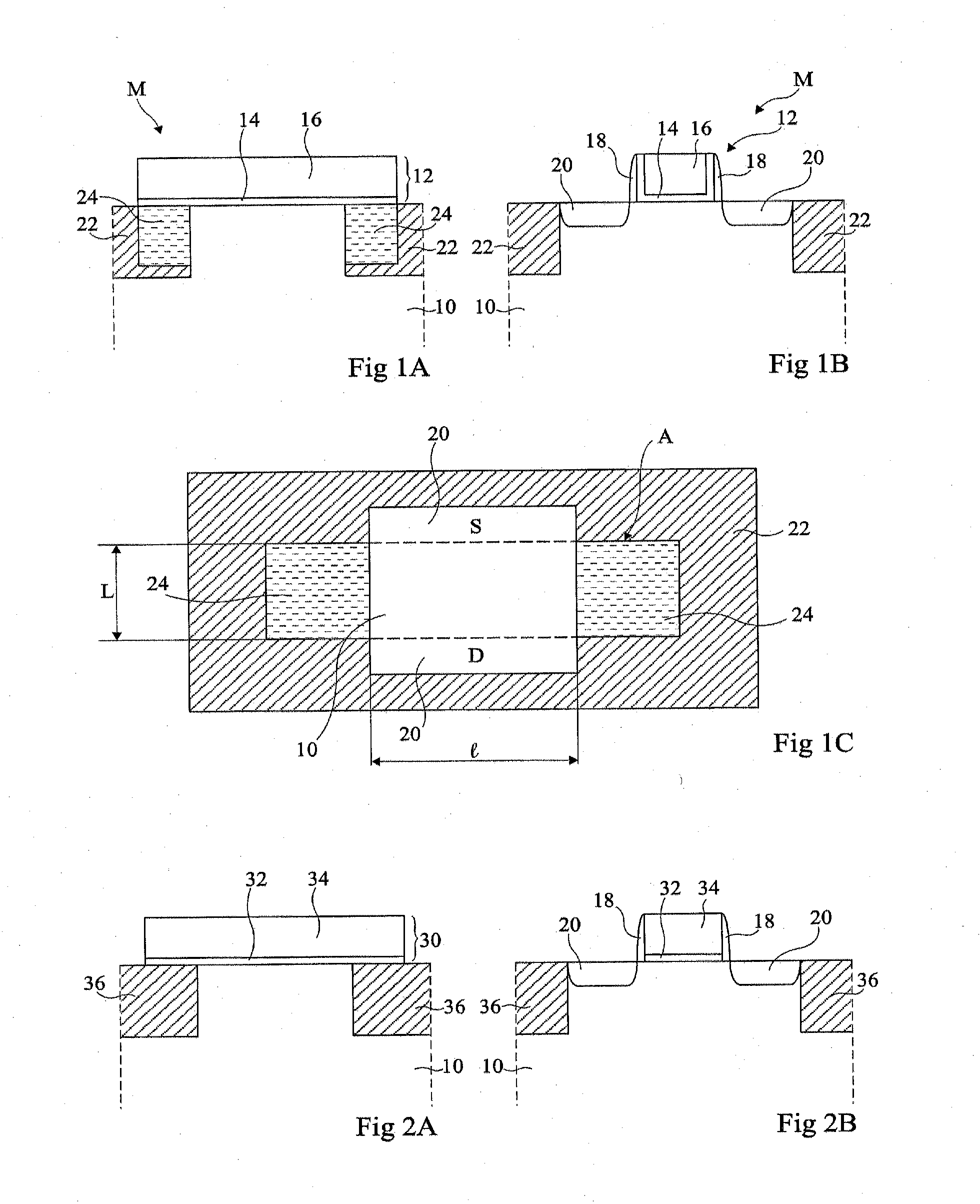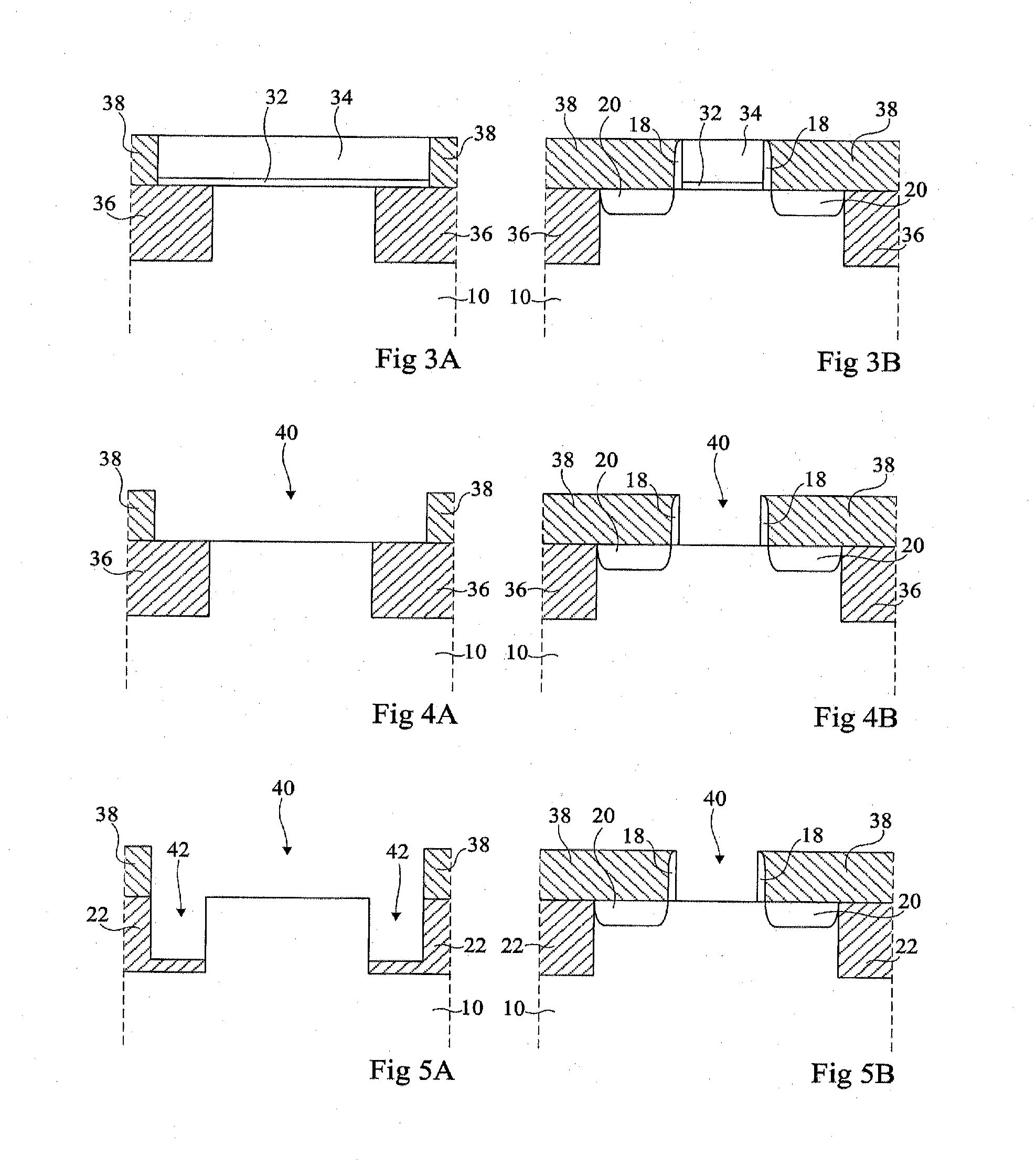Method for manufacturing a strained channel mos transistor
- Summary
- Abstract
- Description
- Claims
- Application Information
AI Technical Summary
Benefits of technology
Problems solved by technology
Method used
Image
Examples
Embodiment Construction
[0025]In the drawings which will be described hereafter, a single MOS transistor is shown at the surface of a substrate. It should be noted that, conventionally, many MOS transistors are formed at the surface of a same substrate, for example, in association with other electronic components.
[0026]Further, in the following description, when a material applying a strain on the adjacent semiconductor substrate will be mentioned, the considered strain may be a tensile strain or a compressive strain, according to the desired application and to the desired carrier mobility.
[0027]FIGS. 1A, 1B, and 1C illustrate, respectively in cross-section view along two perpendicular directions at the surface of a substrate and in simplified top view, a MOS transistor M obtained by a method according to an embodiment. The top view of FIG. 1C is simplified in that it does not show the insulated gate of the transistor. Conventionally, the channel distance between the source and drain regions is called the ...
PUM
 Login to View More
Login to View More Abstract
Description
Claims
Application Information
 Login to View More
Login to View More - R&D
- Intellectual Property
- Life Sciences
- Materials
- Tech Scout
- Unparalleled Data Quality
- Higher Quality Content
- 60% Fewer Hallucinations
Browse by: Latest US Patents, China's latest patents, Technical Efficacy Thesaurus, Application Domain, Technology Topic, Popular Technical Reports.
© 2025 PatSnap. All rights reserved.Legal|Privacy policy|Modern Slavery Act Transparency Statement|Sitemap|About US| Contact US: help@patsnap.com



